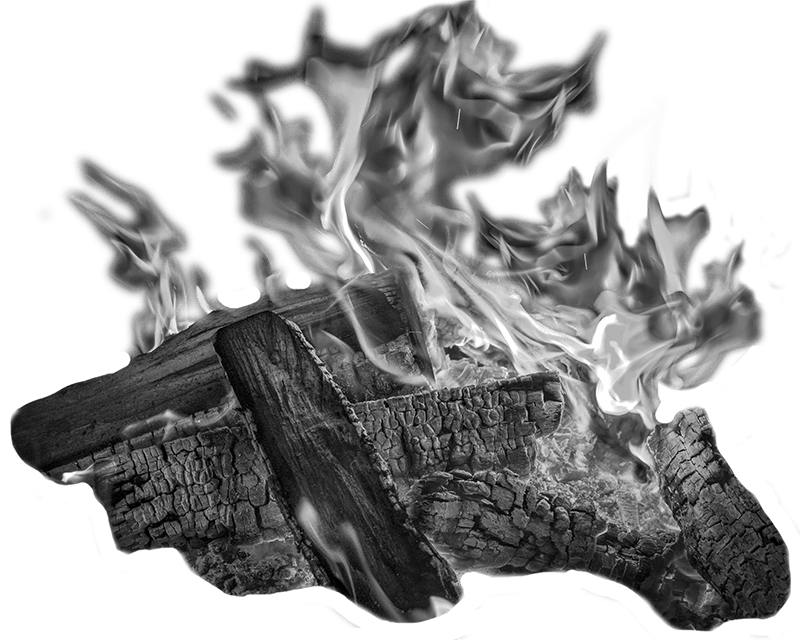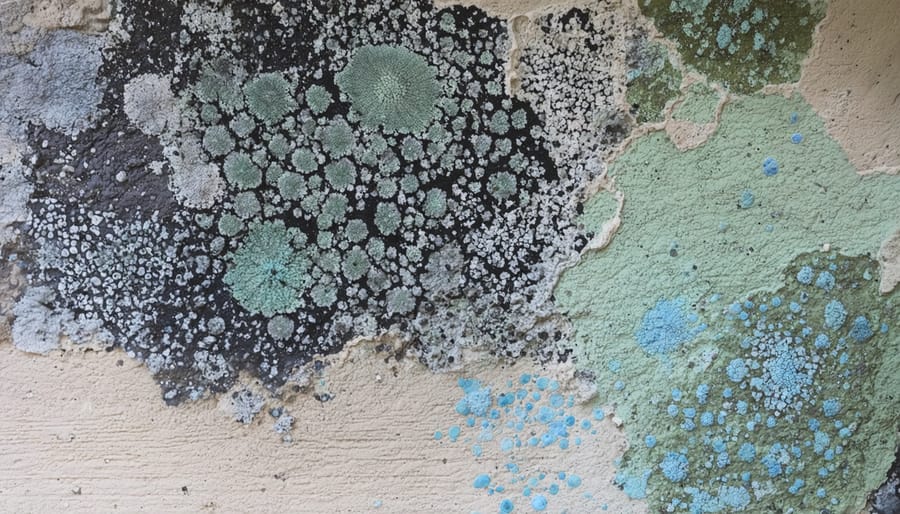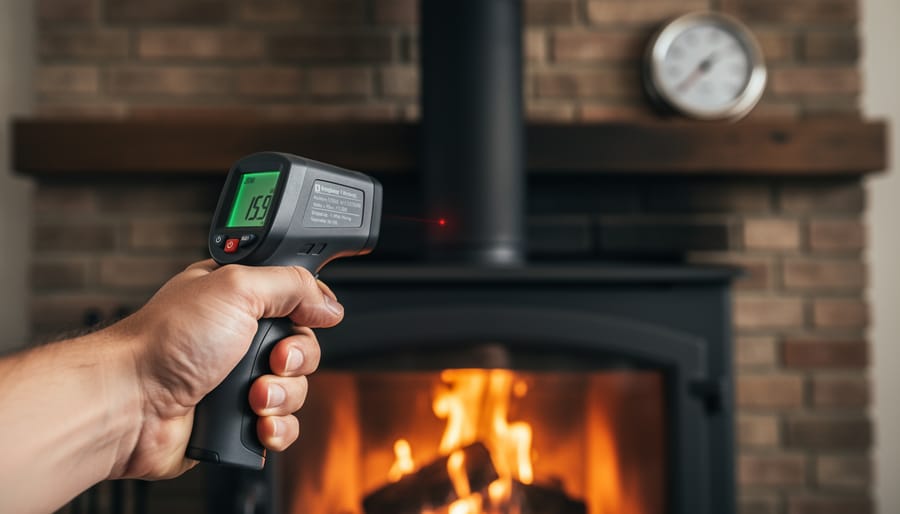Identify basement mold types quickly by examining color, texture, and growth patterns – black, fuzzy colonies often indicate toxic Stachybotrys, while green-blue patches suggest Penicillium. Schedule professional basement mold removal immediately if you spot dark-colored or extensive growth, as these varieties pose serious health risks. Monitor relative humidity levels, keeping them below 60% to prevent dangerous mold species from thriving in your basement’s dark, damp environment.
The four most common basement molds – Aspergillus, Penicillium, Stachybotrys, and Cladosporium – each present unique characteristics and health hazards. While some basement mold types merely cause unpleasant odors and minor allergic reactions, others release mycotoxins that can trigger severe respiratory issues, headaches, and chronic fatigue. Understanding these distinctions helps homeowners make informed decisions about remediation approaches and preventive measures.
These microscopic invaders flourish in basement environments, feeding on common building materials like drywall, wood, and carpet fibers. Left unchecked, they can compromise your home’s structural integrity and your family’s wellbeing, making swift identification and proper remediation essential for maintaining a safe, healthy living space.
Common Types of Basement Mold
Black Mold (Stachybotrys chartarum)
Black mold, scientifically known as Stachybotrys chartarum, is one of the most dangerous types of basement mold and requires immediate attention. This notorious fungus appears as dark green or black patches with a slimy or wet surface texture, often accompanied by a distinct musty odor. It typically grows on materials with high cellulose content, such as drywall, wood, paper, and cardboard, especially when these surfaces remain wet for extended periods.
What makes black mold particularly concerning is its ability to produce mycotoxins, which can cause severe health problems. Exposure symptoms may include respiratory issues, chronic coughing, headaches, skin irritation, and in some cases, more serious neurological symptoms. Children, elderly individuals, and those with compromised immune systems are particularly vulnerable to its effects.
Unlike some common household molds, black mold doesn’t typically grow in open areas. It prefers dark, damp spaces with poor ventilation – making basements an ideal environment. If you suspect black mold in your basement, it’s crucial to contact a professional mold remediation service immediately, as DIY removal can release harmful spores into the air.
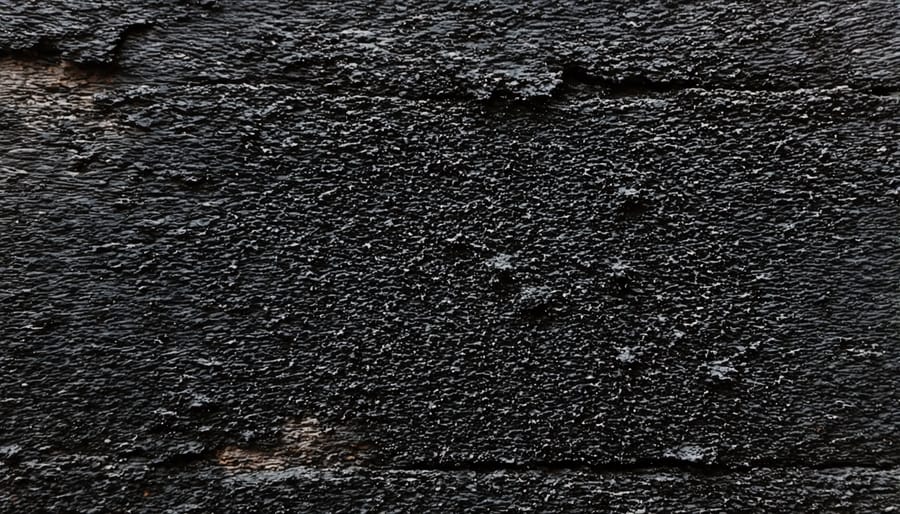
White and Gray Molds
White and gray molds are among the most common types found in basements, primarily belonging to the Aspergillus and Penicillium families. These molds often appear as powdery or fuzzy patches, starting with a whitish color that may gradually turn grayish or even develop a slight greenish tinge as they mature.
Aspergillus typically presents as a white, feathery growth that can spread rapidly across surfaces, especially in areas with poor ventilation. While some species are relatively harmless, others can produce mycotoxins that may cause respiratory issues, particularly in individuals with compromised immune systems or existing allergies.
Penicillium, which starts as a white colony before developing its characteristic blue-green color, thrives in damp basement environments. You’ll often spot it on water-damaged materials like drywall, carpeting, and wooden structures. While this is the same genus that gave us penicillin, household varieties can trigger allergic reactions and respiratory problems.
Both types of mold indicate excessive moisture in your basement and should be addressed promptly. Regular inspection of your basement, maintaining proper ventilation, and controlling humidity levels are essential steps in preventing these common mold varieties from taking hold.
Green and Blue Molds
Green and blue molds are among the most common types you’ll encounter in basement environments. Cladosporium, which often appears as olive-green to brown-black patches, frequently develops on damp walls, wood surfaces, and even fabrics. This resilient mold species can thrive in both warm and cool conditions, making it particularly problematic in basement settings.
Another common variety is Penicillium, which typically starts as small blue-green spots before spreading into larger colonies. While this is the same genus that gave us penicillin, its presence in your home isn’t beneficial. You might notice these fuzzy patches on water-damaged materials, particularly on walls, carpets, and stored items in your basement.
Both green and blue molds can trigger allergic reactions and respiratory issues, especially in sensitive individuals. Common symptoms include sneezing, coughing, and eye irritation. While these mold types aren’t typically as dangerous as black mold, they shouldn’t be ignored.
To identify these molds in your basement, look for:
– Velvety or fuzzy textures
– Colors ranging from olive-green to blue-green
– Circular growth patterns
– Musty, damp odors
– Patches that appear in areas with moisture issues
If you spot these characteristics, it’s important to address both the mold and its underlying cause – usually excess moisture or poor ventilation. Professional assessment may be necessary for extensive growth or if you’re experiencing health symptoms.
Identifying Your Basement Mold
Visual Identification Techniques
Visual identification of basement mold starts with identifying different mold colors and textures, which can provide important clues about the type you’re dealing with. Black mold typically appears as dark spots with a slimy or fuzzy texture, while white mold often looks powdery or thread-like. Green mold varieties can range from olive to bright green, usually with a fuzzy appearance.
Pay attention to the growth pattern and location. Aspergillus typically grows in circular patterns and can appear in various colors, from gray to yellow. Penicillium often starts as small blue-green patches that expand into larger colonies. Stachybotrys, commonly known as black mold, has a distinctive dark green or black color and tends to grow in areas with constant moisture.
The texture of the mold can also help with identification. Some species appear velvety, while others might look more powdery or cotton-like. Observe whether the mold appears flat against the surface or has a raised, three-dimensional appearance. Keep in mind that mold can change appearance depending on its growth stage and environmental conditions.
Remember to use proper lighting when examining mold growth. A flashlight held at an angle can help reveal texture differences and subtle color variations that might not be visible under normal room lighting.
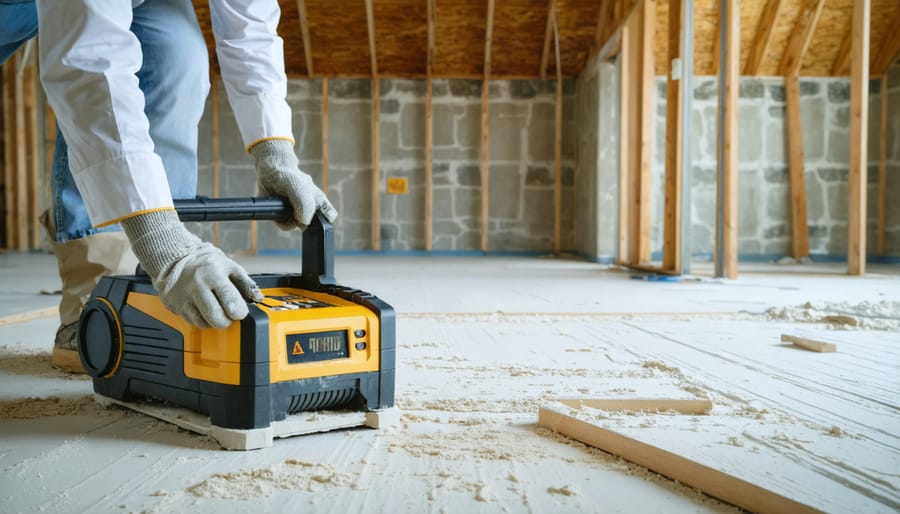
When to Test for Mold
Knowing when to test for mold is crucial for maintaining a healthy home environment. While visible mold growth is an obvious sign that testing is needed, there are several other scenarios where professional testing becomes essential.
Consider scheduling a professional mold inspection if you notice a persistent musty odor, experience unexplained allergic symptoms, or discover water damage in your basement. Testing is particularly important after flooding events or if you’re planning to buy or sell a home.
Professional mold testing provides accurate results through advanced equipment and laboratory analysis. Certified inspectors can identify hidden mold growth behind walls or under flooring, measure spore concentrations in the air, and determine the specific types of mold present in your basement.
For regular monitoring, DIY mold testing kits are available at most hardware stores. While these kits can be useful for initial screening, they have limitations and may not detect all types of mold or provide the comprehensive analysis that professional testing offers.
The best time for testing is during humid conditions when mold is most active. However, if you’ve recently cleaned up visible mold, wait at least 24-48 hours before testing to ensure accurate results. Regular testing, especially in spring and fall when moisture levels typically increase, can help catch mold problems early before they become severe health hazards.
Health Risks and Warning Signs
Exposure to basement mold can pose serious health risks, and recognizing the warning signs is crucial for protecting your family’s well-being. Different types of mold can cause varying degrees of health issues, from mild irritation to severe respiratory problems.
Black mold (Stachybotrys chartarum) is particularly concerning, as it can produce mycotoxins that may lead to severe respiratory issues, chronic coughing, headaches, and in some cases, neurological symptoms. People with existing allergies, asthma, or compromised immune systems are especially vulnerable to its effects.
Common symptoms of mold exposure include:
– Persistent coughing and wheezing
– Stuffy or runny nose
– Itchy, watery eyes
– Skin rashes or irritation
– Throat irritation
– Headaches and fatigue
– Difficulty breathing
– Sinus infections
Aspergillus species can trigger allergic reactions and may cause lung infections in people with weakened immune systems. Penicillium varieties often contribute to allergies and asthma symptoms, while Cladosporium can cause respiratory issues and exacerbate existing conditions.
Watch for these warning signs that indicate significant mold problems:
– Visible mold growth, especially dark spots or patches
– Musty, earthy odors
– Increased allergy symptoms when in the basement
– Water stains or discoloration on walls and ceilings
– Peeling wallpaper or paint
– Persistent condensation on surfaces
If you or family members experience persistent symptoms or notice any of these warning signs, it’s essential to address the mold issue immediately. Consider temporary relocation during remediation if symptoms are severe. Always consult a healthcare provider if you experience serious health effects, and work with professional mold remediation experts for safe removal.
Remember that prevention is key – maintaining proper ventilation, controlling humidity levels, and addressing water issues promptly can help protect your health and home from dangerous mold growth.
Prevention and Maintenance
Moisture Control Solutions
Controlling moisture in your basement is crucial for preventing mold growth and maintaining a healthy home environment. Start by addressing any water infiltration issues through proper drainage systems and foundation waterproofing. Install or repair gutters and downspouts to direct water away from your home’s foundation, and ensure your yard is graded to slope away from the house.
Using a quality dehumidifier is essential for maintaining optimal basement humidity levels between 30-50%. Place the dehumidifier in a central location and empty it regularly or connect it to a drain for continuous operation. To improve air circulation, use fans strategically and consider installing ventilation systems if necessary.
Seal any cracks in your foundation walls and floors using appropriate waterproofing materials. Pay special attention to pipe penetrations and window wells, as these are common entry points for moisture. Installing a vapor barrier on basement walls and floors can provide additional protection against moisture seepage.
Regular maintenance is key – check your sump pump functionality, clean your gutters seasonally, and inspect for any signs of water damage or leaks. Consider using moisture-absorbing products in problem areas and ensuring proper insulation to prevent condensation on cold surfaces. These preventive measures will help create an environment where mold can’t thrive, protecting your home and health.
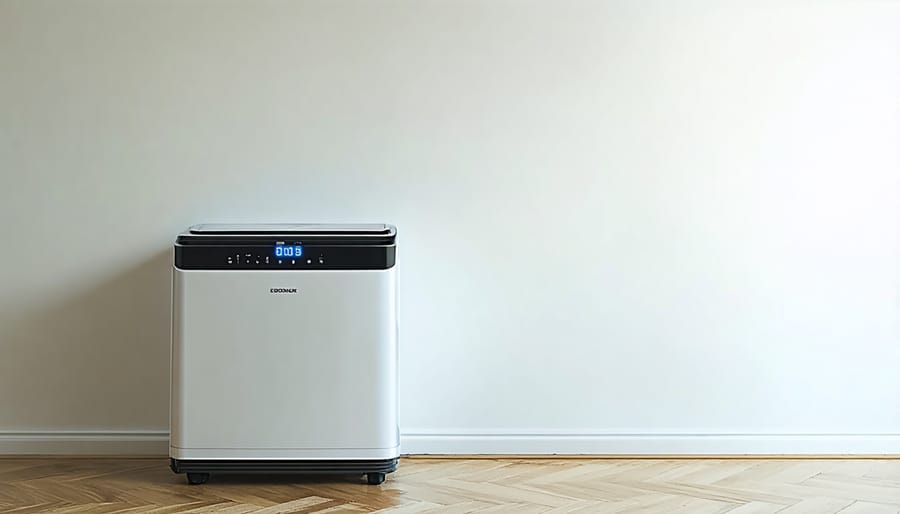
Regular Inspection Routine
Establishing a regular basement inspection routine is crucial for catching mold problems early and preventing extensive damage. Start by scheduling monthly visual inspections of your basement, paying special attention to corners, walls, and areas around pipes. Use a flashlight to examine dark spaces thoroughly, and don’t forget to check behind furniture and stored items.
Keep a simple checklist that includes common problem areas such as window wells, floor drains, and foundation walls. During each inspection, test humidity levels using a hygrometer – aim to maintain proper ventilation equipment and keep humidity below 60% to prevent mold growth.
Document any changes you notice, including musty odors, water stains, or discoloration. Take photos of suspicious areas to track potential growth over time. Seasonal inspections should be more thorough, including checking exterior drainage systems and foundation walls for cracks or damage that could lead to water infiltration.
If you spot any concerning signs, don’t wait for your next scheduled inspection – investigate immediately. Consider having a professional inspection annually, especially if you’ve had previous mold issues or live in a humid climate. Remember, catching mold early can save thousands in remediation costs and protect your family’s health.
Identifying and addressing basement mold isn’t just about maintaining your home’s appearance – it’s crucial for protecting your family’s health and your property’s structural integrity. Throughout this guide, we’ve explored the various types of mold commonly found in basements, from the relatively harmless Cladosporium to the potentially dangerous black mold, Stachybotrys chartarum.
Remember that different mold types require different approaches to removal and prevention. While some varieties might seem benign, any mold presence indicates excess moisture that needs addressing. The key takeaway is that prompt action is essential – what might start as a small patch of harmless mold can quickly spread and potentially evolve into a more serious issue.
Don’t wait until you see visible mold growth to take action. Regular basement inspections, proper ventilation, and moisture control are your best defenses against all types of mold. If you’re unsure about what type of mold you’re dealing with, it’s always better to consult with a professional mold remediation expert who can properly identify the species and recommend appropriate treatment methods.
By understanding the different types of basement mold and their warning signs, you’re better equipped to protect your home and family. Stay vigilant, address moisture issues promptly, and don’t hesitate to seek professional help when needed. Your basement’s health is integral to your entire home’s wellbeing.
